Mango Fruit Leather
Snack
Recipe
Fruit leather (aka rollups) is essentially just another form of dried fruit however it provides a bit of variety due to the different texture and taste. Unlike making dehydrated fruit where the main choice is ‘do I like it on the soft side or on the crispy side?’, making fruit leather can be a bit more complex.
Having said that Mango Fruit Leather is about as simple as it gets. It only has one ingredient, mango. And given the texture, natural sugars and moisture content, the only preparation required is pureeing it in a food blender or processor until the fruit pulp is smooth with no lumps. From their it is into the dehydrator or oven.
This recipe is designed for a food dehydrator however if you don’t have one then you can use an oven, preferably fan forced at a very low temperature 55°C (see below). Keep an eye on the dehydration process – it is ready when the leather isn’t sticky to touch. If using a dehydrator you may need to turn it over to ensure it is fully dry but I have found that it only really needs around 30 minutes more to finalise the leather. I suggest you start this first thing in the morning to avoid it running overnight because there is the risk of making it just that bit too crispy if it stays under heat for too long.
For me this is one of those moorish foods that creeps up on you. Turning 500 grams of mango into 65 grams of fruit leather creates a situation where it doesn’t last long. For those who want a calorie dense food, this is about as good as it gets and will do me as one of my daily snacks.
The facts
- 500 grams of mango flesh contains 300 calories
- Once fully dehydrated the Mango Leather will weigh around 65 grams
- Approximate calories per 100 grams of dried mango is 461 calories
Ingredients
500 grams of mango (frozen or fresh and ripe).
I recommend using frozen store bought mango as it just makes the whole process clean and easy.
Preparation
If using a dehydrator
- If using frozen mango allow it to thaw out first. If using fresh ripe mango, peel and remove the seed and skin
- Puree mango in a food processor until smooth and all the lumps are gone
- Spread the mango onto a plastic dehydrator insert and place in the dehydrator. Ensure you have as even a layer as possible otherwise you will end up with crispy patches
- Dry on a medium heat (55° C) for approximately 9-10 hours
- Carefully peel away from the plastic tray and turn over
- Continue drying for another 30-60 minutes until any wet patches are dry
- Remove from dehydrator and cut into 25 mm wide strips with a sharp knife
- Roll up and store away from sunlight in a cool dry place in a well sealed plastic container
- Eat up!
- Store in a ziplock bag for hiking
If using an oven
- If using frozen mango allow it to thaw out. If using fresh ripe mango peel and remove the seeds and skin
- Puree mango in a food processor until smooth and all lumps are gone
- Spread the mango evenly onto a low profile metal oven tray lined with a high grade plastic wrap
- Don’t go cheap here as the cheap wrap may melt even in low heat. Use a branded and microwavable wrap
- Ensure you have as even a layer as possible otherwise you will end up with crispy patches
- Place the tray in the middle of an oven set at 55ºC. Use the fan forced setting if available
- Dry for approximately 9-10 hours monitoring as you go because every oven is slightly different. The Mango Leather is ready when it is no longer sticky
- Remove from the oven and peel off the plastic and allow to cool slightly
- Cut into 25 mm wide strips with a sharp knife
- Roll up and store away from sunlight in a cool dry place in a well sealed plastic container
- Eat up!
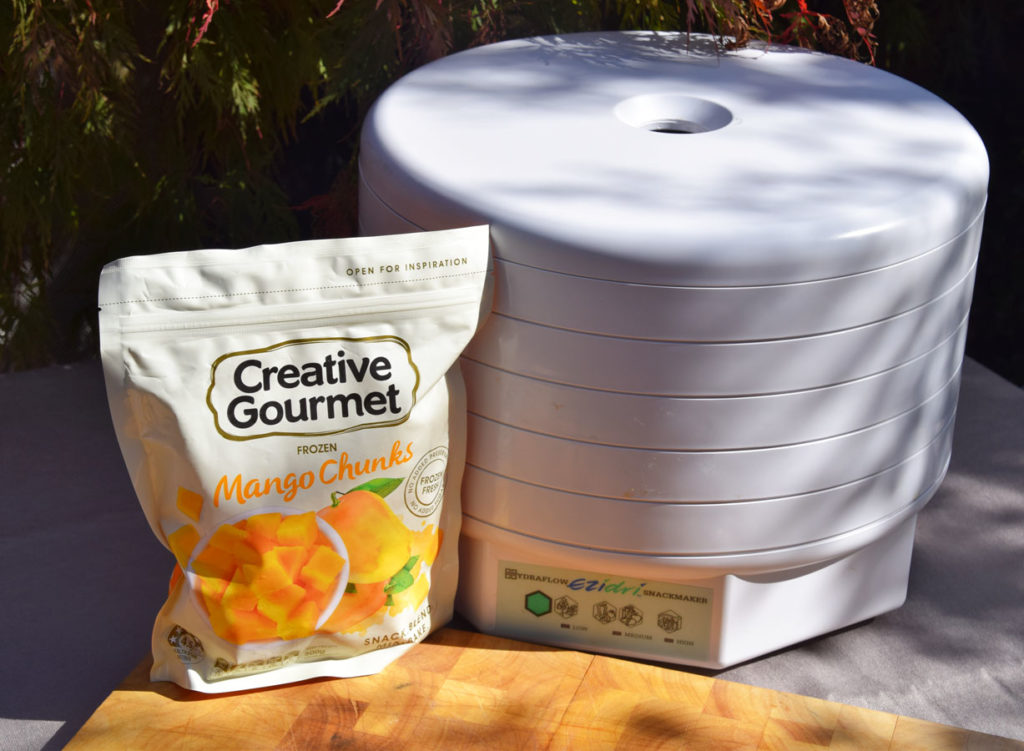
This recipe is about as simple as it gets. Mango and something to dry it in
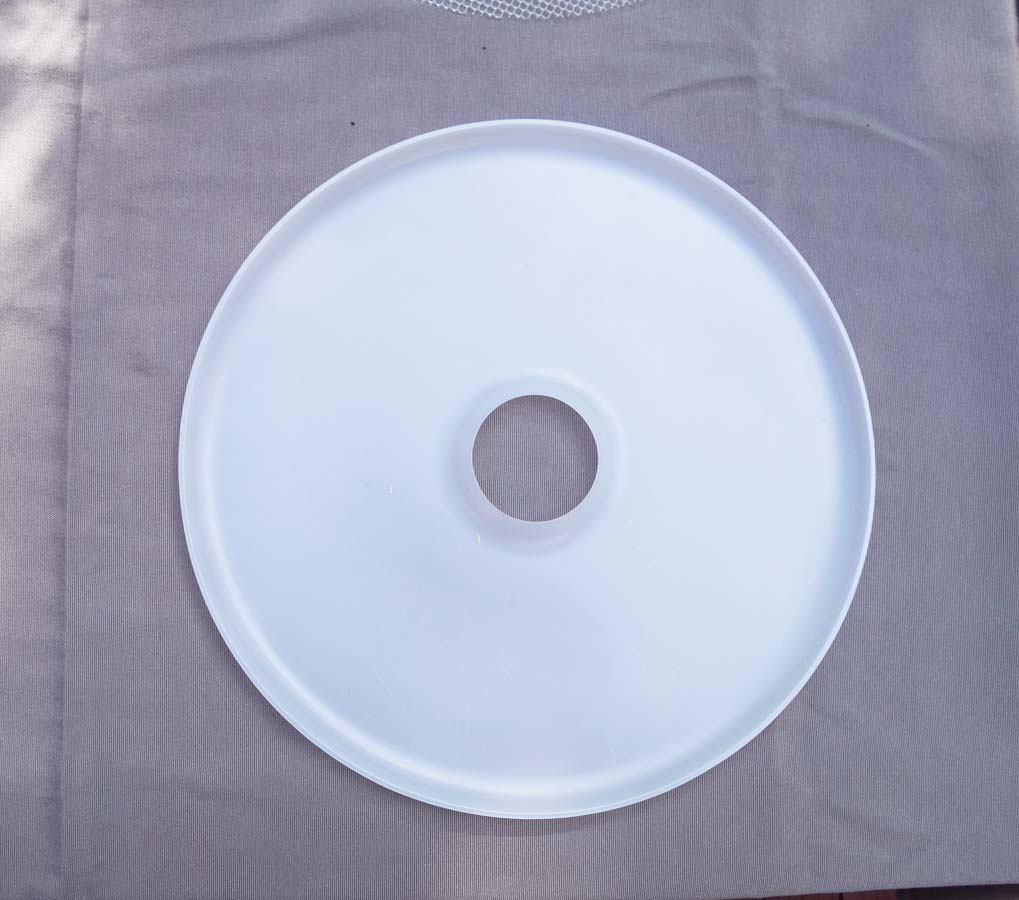
Plastic tray insert for my dehydrator
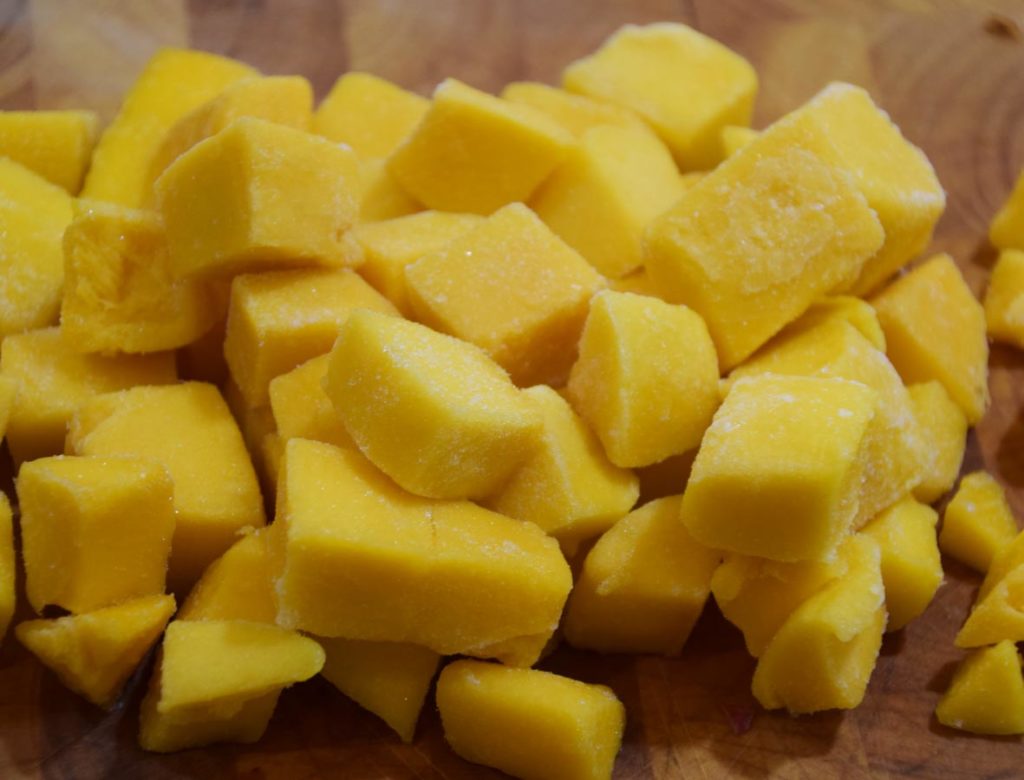
Frozen mango pieces which you will find in most large supermarkets
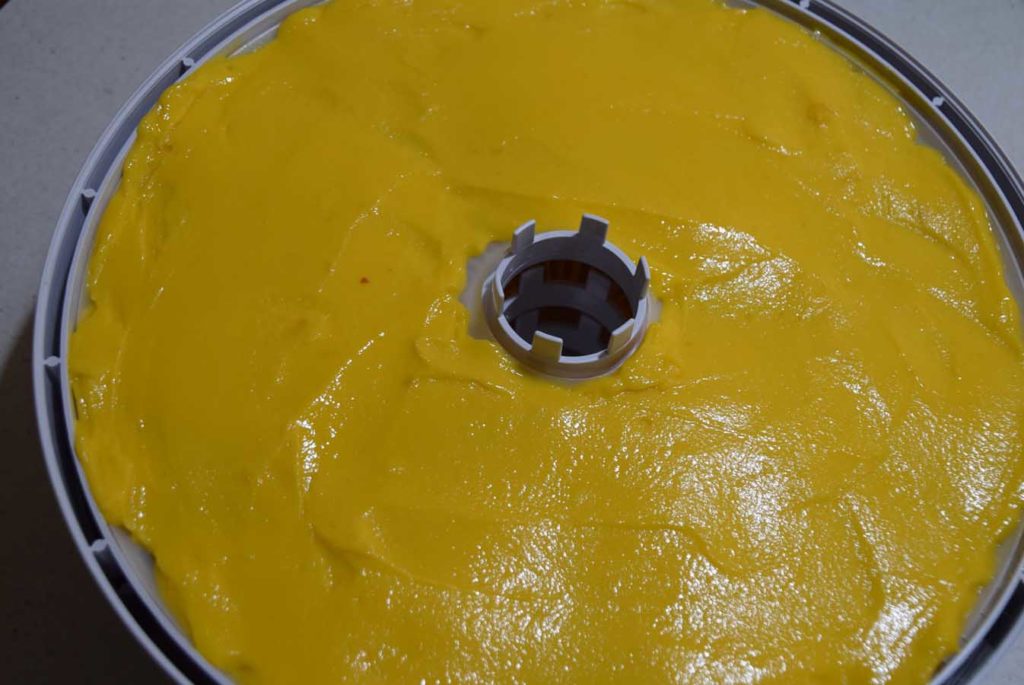
Pureed mango spread over tray and ready for drying
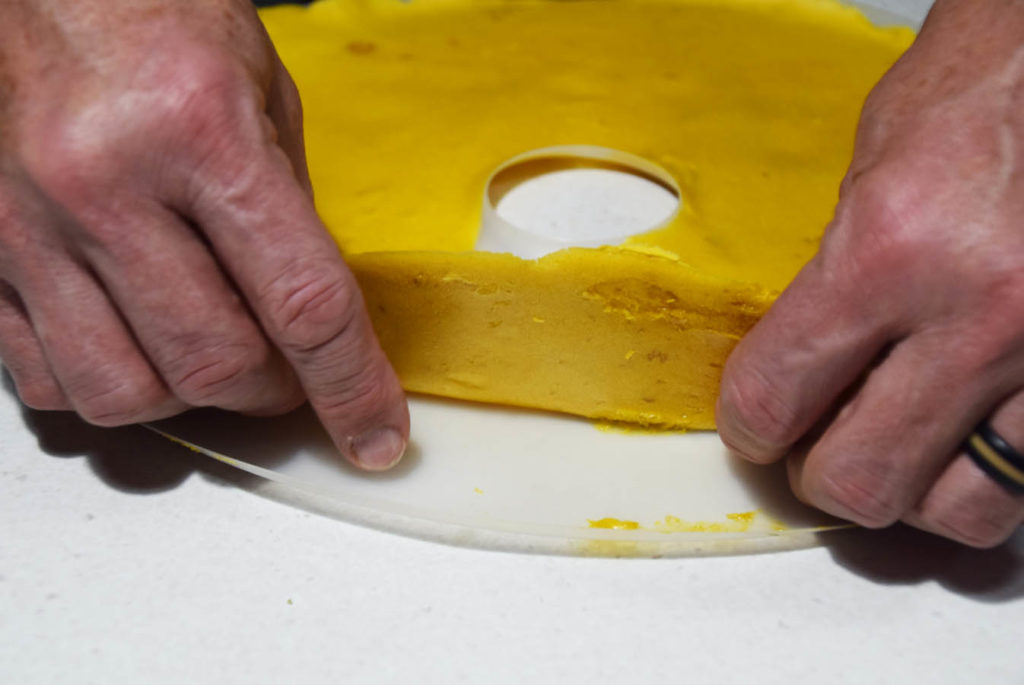
Peeling the leather off the tray. Do this slowly and with care to maintain the integrity of the mango sheet
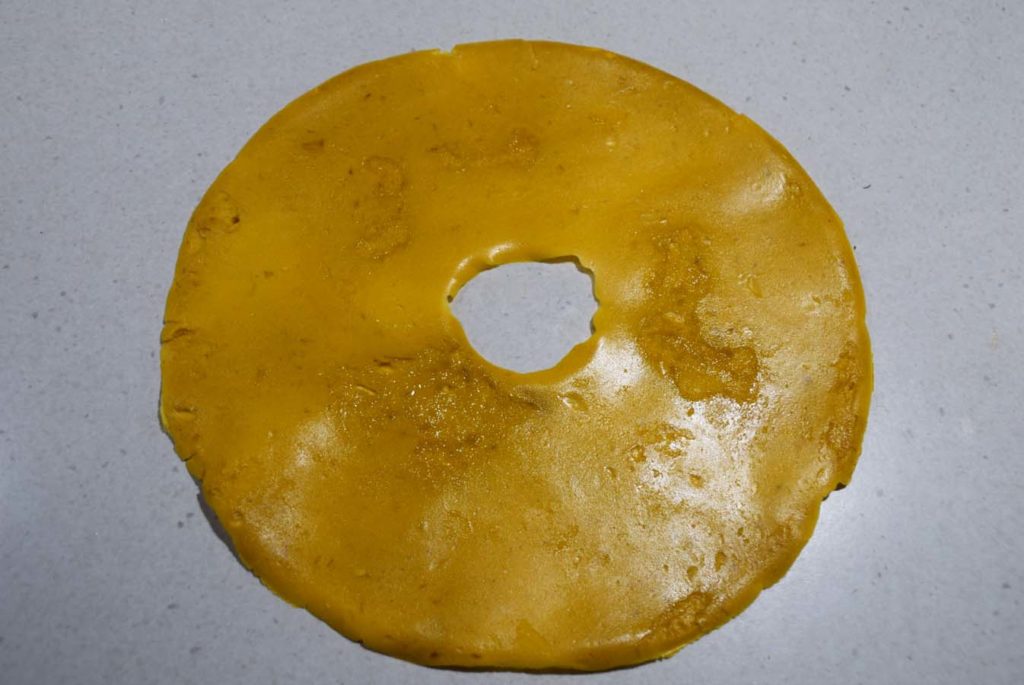
Mango Leather peeled out and ready to turn over to complete the drying process. In this image you can just see a couple of slightly tacky areas that need a bit more drying time
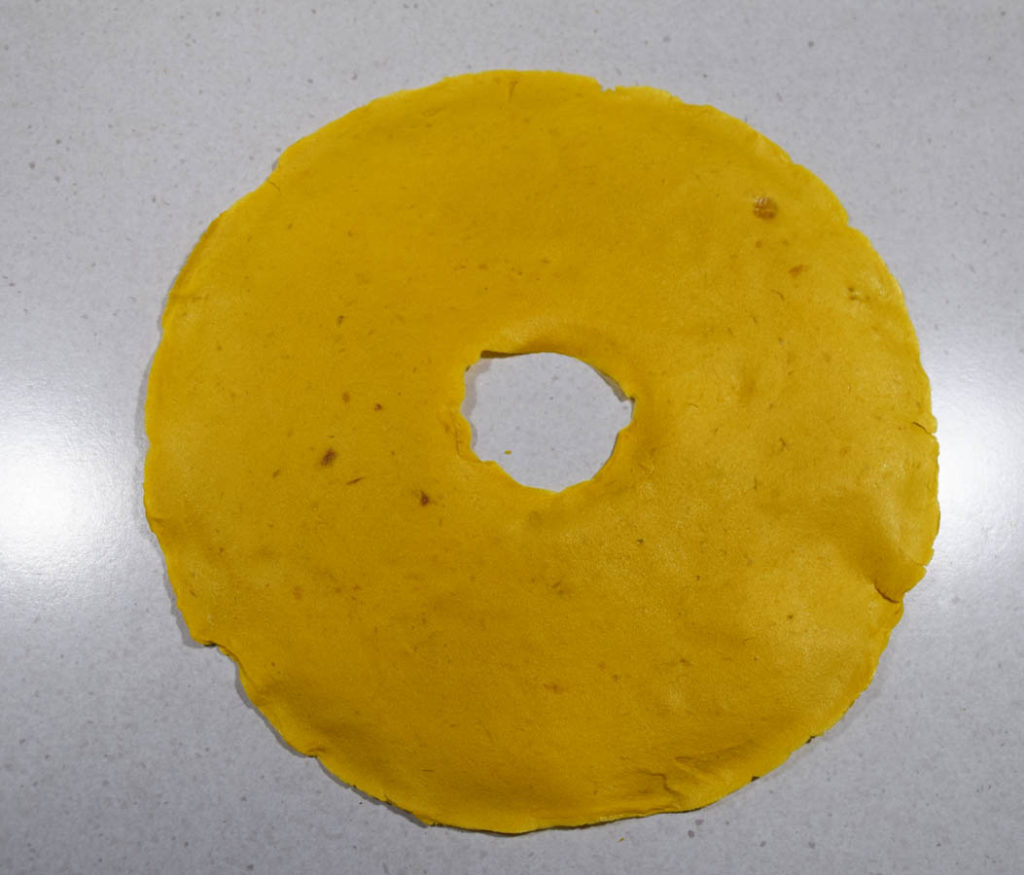
Peeled out and ready to cut
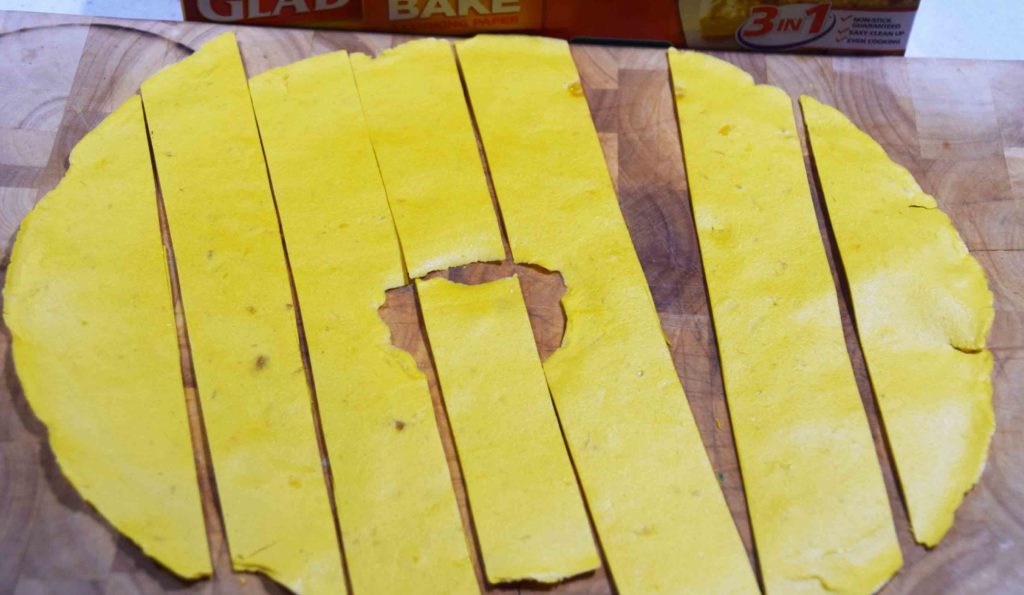
Cut and ready to roll
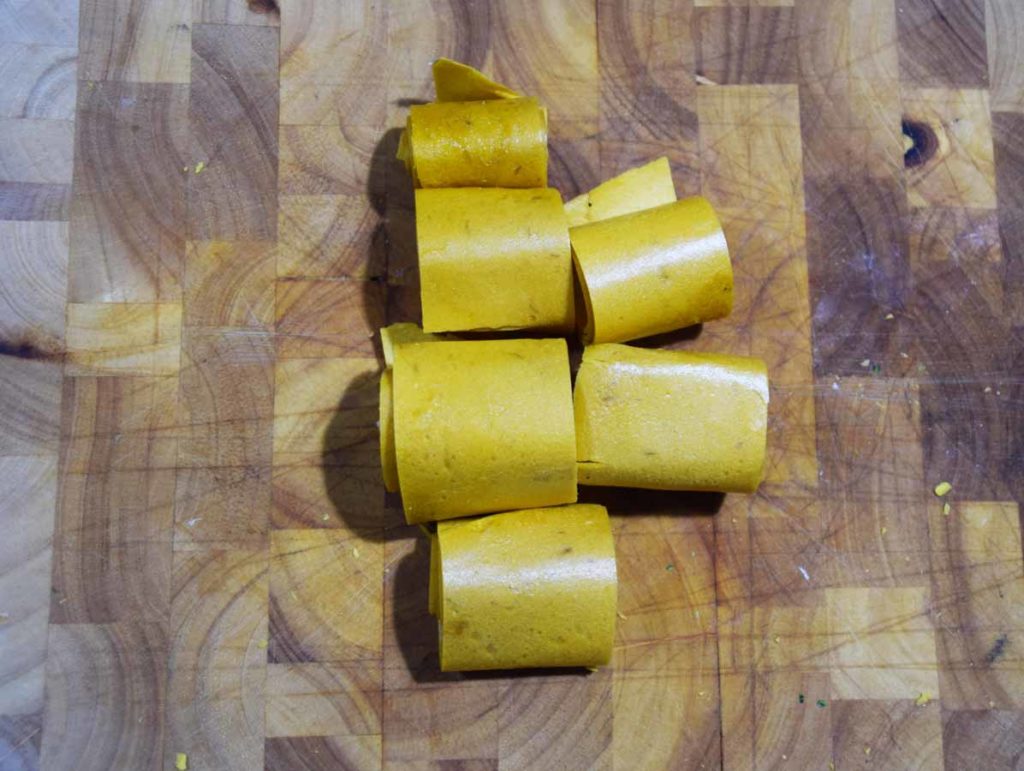
Cut and rolled. I’m not so fussy about it looking pretty but that’s a personal choice
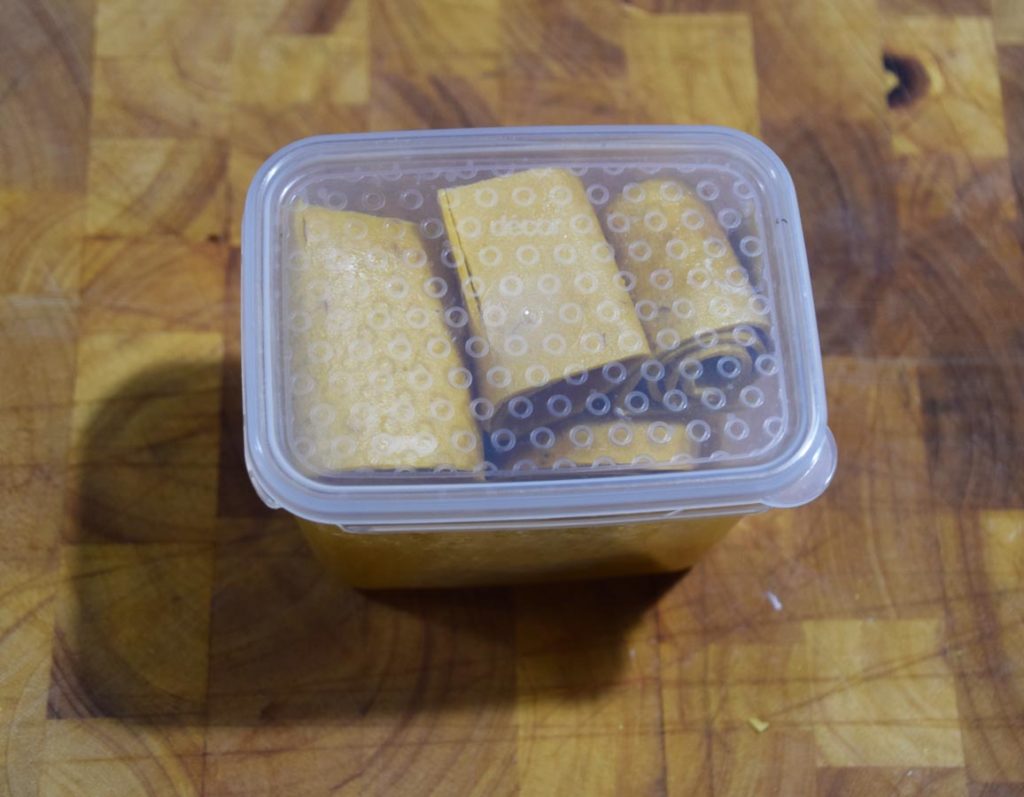
Seal in a plastic airtight container and store in a cool dry place; thats if you dont eat it first!